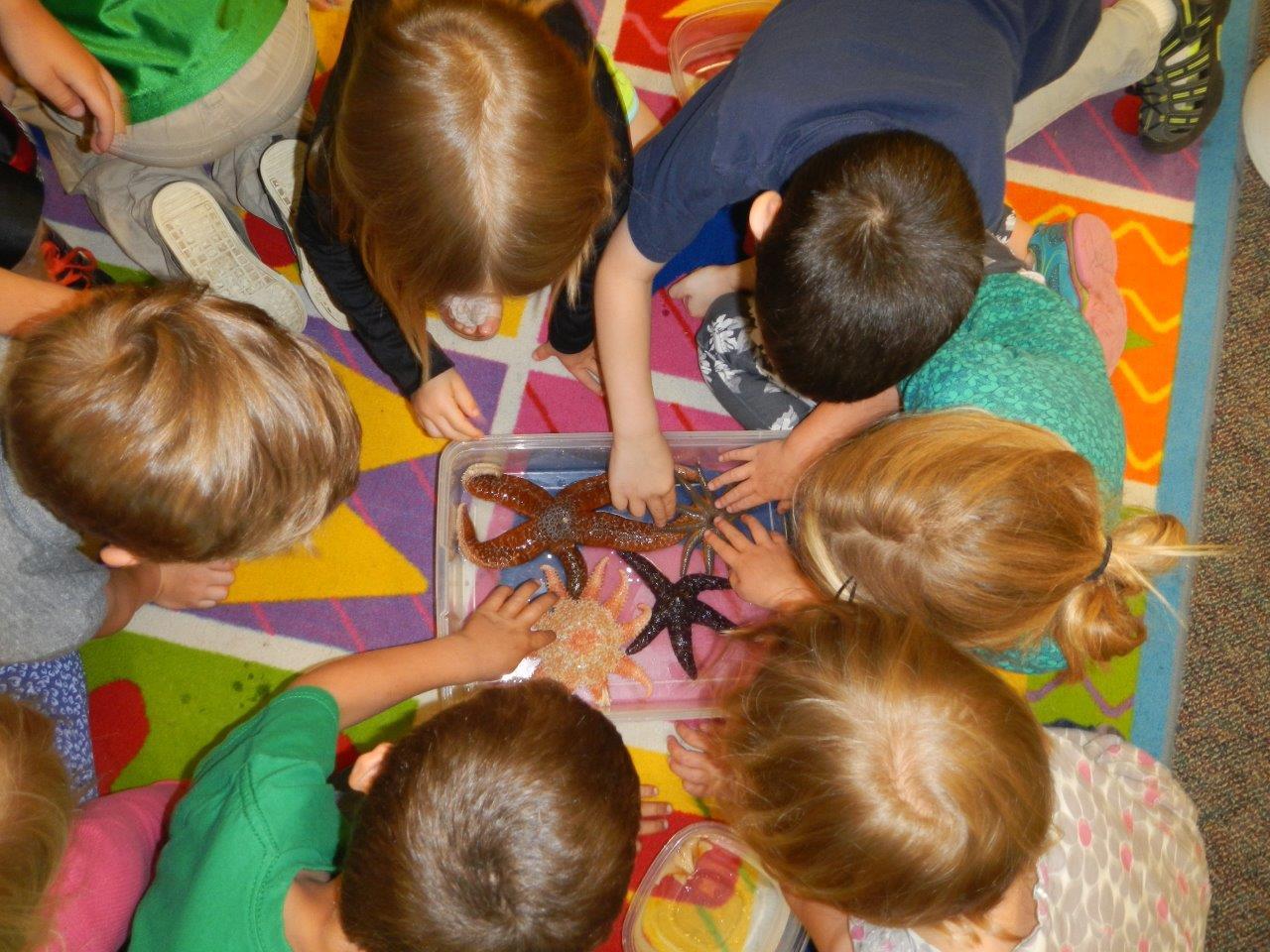Kindergartners gather around the buckets placed on the tables in their class, squealing ensues as they get up close, even touching the creatures, starfish, sea cucumbers, inside.
“The kids really appreciate doing the work, having the responsibility and hands on experience,” said Jenny Roberts, coordinator of K-12 Friday Harbor Labs Science Outreach Program.
The 16th annual fundraiser Jazz at the Labs takes place Aug. 20, from 6–9:30 p.m. at the lab’s dining hall. Tickets are $40, if interested call 378-2165 ext. 0. Although tickets may be bought at the door, reservations are strongly recommended. The event includes a full dinner, and jazz concert, eemc’d by KPLU’s (88.9) morning jazz host Dick Stein. The lab is a branch of the University of Washington build in the 1920s to study marine biology, and oceans in general. Students, researchers and professors come from around the world to study.
The music
Stein’s love of jazz began as a child after hearing Billie Holiday’s “You Go to My Head.”
“I realized immediately that it was way better than ‘Doggie in the Window,'” he laughed.
That love of jazz eventually led him to KPLU where he has been hosting his show since the 90s.
Stein, who has emceed Jazz at the lab for several years, said “It’s the highlight of our (he and his wife) summer. I love the music and the crowd.”
Stein also appreciates the fact Jazz at the lab raises funds for sciences.
“I feel it is a very worthwhile cause, especially given the greater than ever need for the critical thinking skills scientific education provides,” said Stein.
Interestingly, both bands are filled with scientists. San Juan Jazz Quintet drummer is none other than the lab’s former director, Dennis Willows, and Thor Hanson, local biologist and writer, plays bass. Jazz Coalescence is led by trombonist Chris Amemiya, who is by day a genetics professor at the University of Washington.
“People love these bands (Jazz Coalescence from Seattle, and San Juan Jazz Quintet), and return year after year to listen to them,” said Rachel Anderson, program coordinator.
“We want people to enjoy the music and the gorgeous setting of the dining hall,” Anderson said, explaining the absence of an auction this year.
Outreach
More than 15 years ago, Labs researcher David Duggins connected with the San Juan School District, Spring Street International School and potential sponsors to form a partnership between the lab and local schools to further science education. Roberts said she came on board shortly after, and designed what is now FHLSOP.
Roberts has many volunteer opportunities that parents, who love the program almost more than the students, often take advantage of. To get the full scope of the program, during the 2015–16 school year alone, the science outreach program engaged 695 island students. One of those nearly 700 students could be the next Einstein, come up with a cure for cancer, invent a clean energy system, inspired by that experience they once had in elementary school.
Beginning with kindergarten, program staff bring live marine animals, like sea stars, into the classroom. The kindergartners can explore similarities between each animal, honing their observation skills. Projects become more complicated as the students get older. In fifth-grade, students test the quality of water in the Friday Harbor Marina. In seventh-grade they learn about DNA fingerprinting. Students use a cotton swab to remove DNA from their cheeks and analyze it. In high school, the students learn about molecule size, shape and charge in a five day chemistry lab.
Money raised from Jazz at the Labs supports all of these programs. There are a couple of projects needing special attention this year: The week long Invasive Mussel Project Biotechnology lab for high school students and the Diver for a Day program. During Diver for a Day, students collect data regarding the spread of invasive mussels throughout the islands. Results are sent to the University of Puget Sound, and compiled with a Puget Sound wide study.
The other project Diver for a Day has a huge impact on kids, Roberts said, but is very expensive to run. Third-graders are taken out on the lab’s research vessel Centennial. Through the Centennial’s video camera, students are able to follow and ask the submerged diver questions as they move through the underwater habitat. Upon returning to the boat, the diver brings some marine life for students to examine hand-on. Viewing comments from the third-grade, it is truly a memorable event for them.
“Thank you for bringing up the slime-star,” one student wrote thanking the staff after Dive for a Day, “It was really cool. I liked how it protects itself with slime.”
For info, visit the lab’s website, depts.washington.edu/fh.



